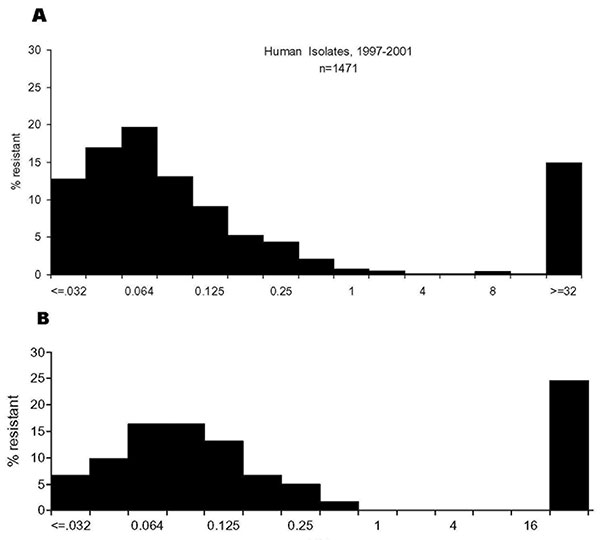Volume 10, Number 6—June 2004
Research
Antimicrobial Resistance among Campylobacter Strains, United States, 1997–2001
Figure 1

Figure 1. Distribution of ciprofloxacin MICs among Campylobacter jejuni isolated from humans and retail chicken. A, human isolates, 1997–2001; n = 1,471. B, grocery store purchased chicken isolates, 1999; N = 62.
Page created: February 22, 2011
Page updated: February 22, 2011
Page reviewed: February 22, 2011
The conclusions, findings, and opinions expressed by authors contributing to this journal do not necessarily reflect the official position of the U.S. Department of Health and Human Services, the Public Health Service, the Centers for Disease Control and Prevention, or the authors' affiliated institutions. Use of trade names is for identification only and does not imply endorsement by any of the groups named above.